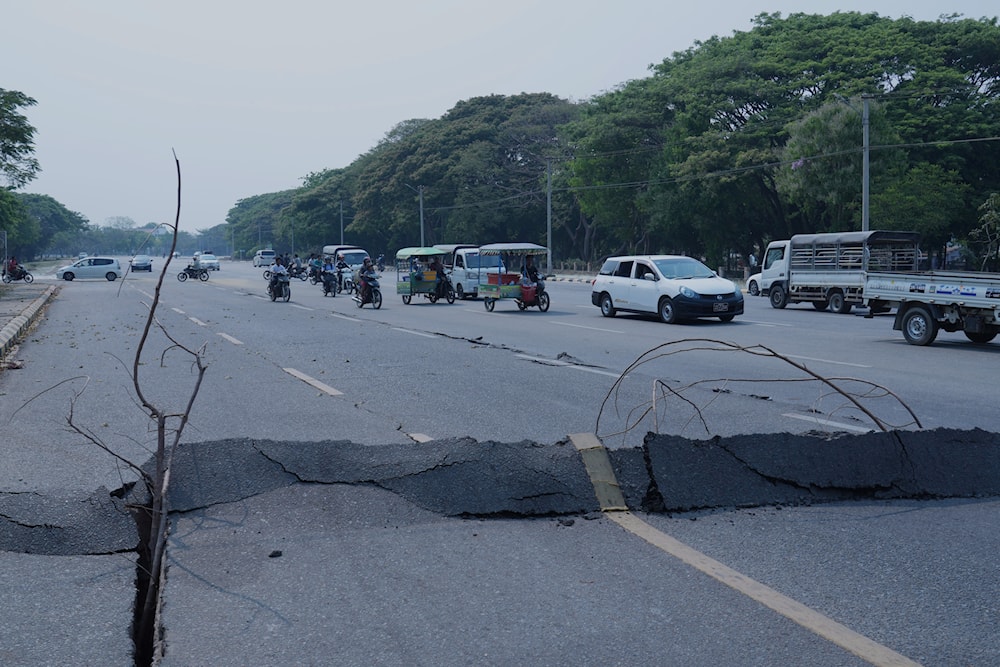Myanmar earthquake death toll rises to 1,002: Reports
MRTV reported on Telegram that the earthquake had left 1,002 dead, 2,376 injured, and 30 missing, noting that data collection was ongoing.
-

Vehicles make their way near a road damaged by an earthquake on March 28, 2025, in Naypyitaw, Myanmar. (AP Photo/Aung Shine Oo)
On Saturday, China Central Television (CCTV) reported that the death toll from the earthquake in Myanmar had climbed to 1,002.
Earlier figures indicated the earthquake had resulted in 694 fatalities.
1. The scenes coming out of Myanmar and Thailand are horrific. They were not prepared for an earthquake of this magnitude.pic.twitter.com/S1cqFb6uVC
— Vertigo_Warrior (@VertigoWarrior) March 28, 2025
An additional 2,376 people were injured, and many remain missing, according to China Central Television (CCTV), citing Myanmar media.
On Friday, a 7.7-magnitude earthquake struck Myanmar, shaking neighboring Thailand and causing the collapse of an under-construction skyscraper in Bangkok. A state of emergency was declared.
This is Myanmar, devastated by the 7.7 earthquake. Hundreds are missing. pic.twitter.com/D7Y46C6Pz9
— Ian Miles Cheong (@stillgray) March 28, 2025
According to the United States Geological Survey (USGS), the epicenter was located at a shallow depth northwest of Sagaing, Myanmar. Shortly after, a 6.4-magnitude aftershock followed.
UNICEF is deeply concerned about the devastating impact of today’s earthquake in Myanmar on children and families.
— UNICEF (@UNICEF) March 28, 2025
Damage has also been reported in parts of Thailand.
Our teams are in affected areas to assess impact and prepare humanitarian support.
© UNICEF Myanmar pic.twitter.com/ybUMlbB59V
Earthquakes are common in Myanmar, which lies along the Sagaing Fault. The country experienced six quakes above 7.0 magnitude between 1930 and 1956, and a 6.8-magnitude tremor in Bagan in 2016 caused fatalities and damaged historic temples.
Experts warn that Myanmar’s rapid urban expansion, crumbling infrastructure, and weak medical system make its cities particularly vulnerable to major disasters.

 1 Min Read
1 Min Read








